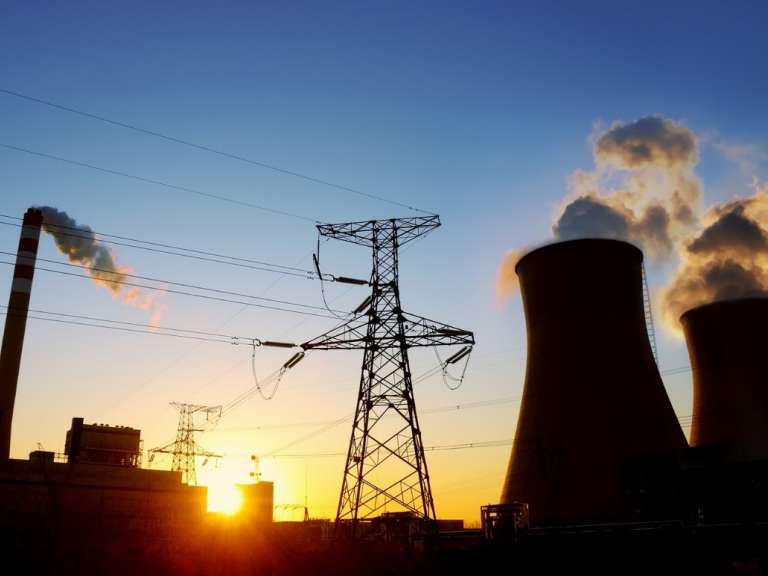Air Pollution Regulations: Texas Coal Plants Win Battle, But Coal Will Lose War
Peter Kelly-DetwilerThe battle over air pollution regulations is being fought across the country.

The battle over air pollution regulations is being fought across the country. The most recent skirmish was in Texas, where the US Environmental Protection Agency (EPA) indicated it would withdraw a rule forcing fifteen coal-fired power plants (seven in Texas and eight in Oklahoma) to cut pollution under the Regional Haze Rule of the Clean Air Act, as San Antonio Express News explained. The original rule would have required investments in scrubbers and other technologies to improve air quality near national parks and wilderness areas.
Several owners of affected plants in Texas, supported by the state Attorney General, went to court to fight the rule, stating that the extra costs of compliance would cause the plants to go out of business and imperil up to 8,400 megawatts of generation. However, the EPA indicated it wanted to reshape its plan, and also proposed another regulation under the Regional Haze Rule. This new restriction would force nine older Texas coal plants (and five other facilities) to be retrofitted with the best available retrofit technology to cut particulates and sulfur dioxide emissions.
It is unclear what impact the Trump administration will have on whether and how this gets enacted. But in the long run, it may not matter for the overall future of coal-fired electricity generation, owing to the rapidly evolving energy landscape involving both a flood of cost-effective renewables and cheap fracked gas.
The first casualty in this new world will be new coal plants. With their 40+ year long-term investment horizons, investors won't touch coal anymore. Potential future carbon mitigation costs and air pollution regulations are so potentially expensive that the risk simply isn't worth it. Second, the generation landscape is increasingly being populated by resources that are generally smaller, more modular in nature, and cheaper to operate. Viewed from a Levelized Cost of Operation perspective, a new coal plant has a hard time competing with natural gas combined-cycle plants, or even new wind and solar.
Finally, there is the issue of technological change itself. Coal plants are a relatively mature technology, and there will probably not be much more innovation in the sector. By contrast, new innovations are continuously being developed to improve technologies in solar, wind, and the extraction of natural gas.
With wind, the economics keep improving as towers get taller, turbines become more efficient, and blades get stronger and lighter. Taller machines harvest more wind at lower prices, opening up new areas of the country that have not yet been developed, such as the southeastern United States. Meanwhile, costs of solar continue to fall, driven both by new technologies and enormous global manufacturing economies of scale. Several large unsubsidized contracts were inked this year overseas at well under 3.0 cents.
However, coal's main enemy is cheap natural gas. The two fuels are currently engaged in a showdown for adoption, but the writing is already on the wall. Natural gas will win hands down, and the reason is that technology for natural gas extraction is moving to a whole new level. Aggressive shale drillers are now drilling horizontal wells as much as two miles long—twice the average length—with improved fracking techniques that use more sand to free up—even more—hydrocarbons. The distance of sideways wells has increased by 50 percent in just two years, while the number of zones fracked by the average well has increased by 50 percent as well, noted Bloomberg. The result is that well outputs increased by up to 70 percent, with costs falling significantly. Some companies are even going back and refracking existing wells with these new techniques.
This sea change not only forecloses future options for new coal plants, it takes a chunk out of the current market share for existing plants as well. In Texas, for example, the capacity factor of coal plants has fallen considerably in the past decade. In just the past five years, coal's share of generation declined from over 50 percent to just under 40 percent as wind and gas-fired generation took market share. The mid-Atlantic Power Pool (PJM), which represents over 20 percent of GDP, has witnessed a similar dynamic, with 10,000 MW of coal getting shouldered out by gas in the past five years.
With improved technologies for wind, solar, and natural gas drilling, the temporary reprieve for the fifteen coal plants in their fight against air pollution regulations should be seen for what it is: the rearguard action of an aging industry that will inevitably decline in the face of newer, better, and more economically attractive technologies.
Will the responsibility of intermittent energy source balancing fall primarily on batteries and energy storage, or can digitized thermal power plants take on some of the task?
The EIA estimated that coal will overtake natural gas in power production this winter. Are these simply seasonal power generation trends?
2017 saw more cheap gas and even cheaper renewables. Power prices plummeted, margins tightened, and gas generators saw increased pressure to become more flexible in order to survive. What's ahead?